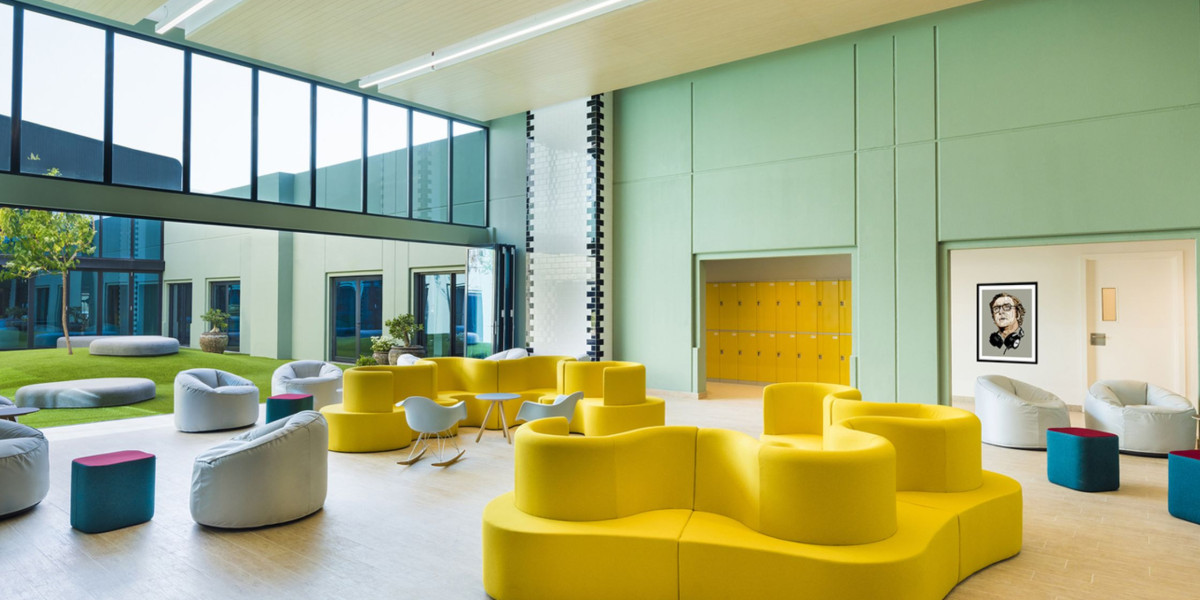Introduction
Design is more than just aesthetics—it shapes how people feel, think, and work within a space. Whether it’s an office tower or a hospital wing, the interior environment plays a vital role in overall productivity, comfort, and well-being. While corporate office interior design and healthcare interior design cater to different industries, they are increasingly intersecting. This crossover has opened the door to shared design strategies that prioritize flexibility, efficiency, and human-centered experiences.
With the rise of hybrid workplaces, wellness-focused spaces, and smart infrastructure, the design principles from both sectors are becoming more aligned. Understanding this convergence helps designers, developers, and facility managers deliver smarter, healthier, and more functional environments.
Understanding the Core Objectives of Each Design Type
Although both design disciplines focus on user needs, each has specific goals based on its environment.
Corporate Office Interior Design Focuses On:
Encouraging employee collaboration and productivity
Reflecting brand identity and culture
Promoting flexibility and tech integration
Reducing distractions and enhancing focus
Healthcare Interior Design Prioritizes:
Supporting patient recovery and staff efficiency
Maintaining cleanliness and infection control
Reducing stress for visitors and families
Meeting health and safety regulations
These core objectives serve different functions, yet both aim to improve user experience. The overlap allows valuable ideas to transfer between sectors.
Shared Principles That Work Across Both Sectors
Despite their differences, healthcare and corporate office interior design share several foundational principles that guide how spaces are planned and constructed.
Key Shared Concepts:
Biophilic Design: Introducing natural elements like plants, wood textures, and sunlight improves mood and air quality in both workspaces and medical facilities.
Wayfinding Systems: Clear navigation is essential in hospitals but also supports movement and reduces confusion in large office spaces.
Modular Layouts: Flexible layouts allow quick adjustments in offices and patient care zones, especially in rapidly changing environments.
Noise Management: Acoustic panels and layout zoning help reduce stress and improve focus for both employees and patients.
Lighting Strategies: Daylight exposure and layered lighting reduce fatigue, improve productivity, and aid healing.
By applying these shared principles, designers create consistent, user-friendly environments across industries.
Enhancing Wellness Through Design
Wellness is a growing priority in both corporate and healthcare spaces. Integrating wellness-focused design elements improves morale, lowers absenteeism, and supports better outcomes.
Wellness Design Tactics:
Installing ergonomic furniture in offices and clinics
Designing quiet rooms or break spaces for staff recovery
Providing access to outdoor views and fresh air
Using color psychology to create calming, motivating, or healing atmospheres
Offering hydration and healthy food stations
Whether for employees or patients, a well-designed space that encourages mental and physical wellness can transform daily experiences.
Flexibility and Future-Proofing the Space
The pandemic underscored the importance of flexible environments that can adapt quickly to new needs. This is especially true for both healthcare interior design and corporate office interior design.
Future-ready design features:
Movable partitions that allow space reconfiguration
Multi-use zones for meetings, rest, or virtual collaboration
Power and data ports installed throughout for easy access
Touchless systems and smart sensors for safety and convenience
Scalable infrastructure that supports changing technology needs
These elements make spaces resilient and responsive, ensuring long-term value and relevance.
Leveraging Technology in Design
Smart design includes not only furniture and layout but also seamless integration of technology. Offices and healthcare facilities now rely heavily on tech for communication, monitoring, and operation.
Technology Integration Tips:
Use of digital signage for communication and navigation
Sensor-based lighting and temperature control
Telemedicine-ready rooms in medical settings
Conference rooms equipped for video collaboration
Real-time scheduling panels outside shared rooms
Such tech solutions support efficiency and ensure user comfort across both types of spaces.
Materials and Durability Considerations
Materials used in interiors must balance durability, aesthetics, and safety. Healthcare facilities often need medical-grade surfaces, while offices seek cost-effective materials that withstand heavy use.
Recommended materials:
Vinyl flooring and antimicrobial fabrics
Seamless, easy-to-clean countertops
Acoustic ceiling tiles to manage noise
Durable laminates with scratch and stain resistance
Eco-friendly paint and wall finishes
Choosing the right materials ensures longevity while aligning with health and sustainability goals.
Designing for Inclusivity and Accessibility
Modern design must accommodate all users regardless of ability. Inclusive design is not just a legal requirement—it’s also a sign of respect and foresight.
Inclusion-oriented features:
Wider hallways and doorways for mobility aids
Adjustable desks and accessible seating
Color contrast for visually impaired users
Restrooms and wellness rooms compliant with accessibility standards
Non-slip surfaces and tactile flooring indicators
By integrating these features, both healthcare and office environments become welcoming and usable for everyone.
Lessons Corporate Spaces Can Learn from Healthcare Design
Healthcare spaces have long prioritized emotional impact and user wellbeing. Corporate office interior design can draw inspiration from this by focusing more on mental health, rest spaces, and reduced sensory overload.
Adaptable ideas for offices:
Creating quiet recovery zones
Reducing harsh lighting and echo-prone materials
Allowing more nature inside the workspace
Prioritizing emotional comfort in color and material selection
These subtle shifts can lead to happier, more productive work environments.
Conclusion
Corporate office interior design and healthcare interior design may serve different functions, but their core values increasingly overlap. Both aim to improve experience, performance, and well-being through thoughtful, people-focused spaces. By sharing insights and best practices, these two sectors can continue to evolve and elevate the environments they shape.
Design that blends functionality with compassion doesn't belong to one industry—it’s a cross-sector necessity. As expectations for workplace and healthcare environments continue to rise, applying the best of both worlds ensures smarter, safer, and more effective spaces for everyone.






